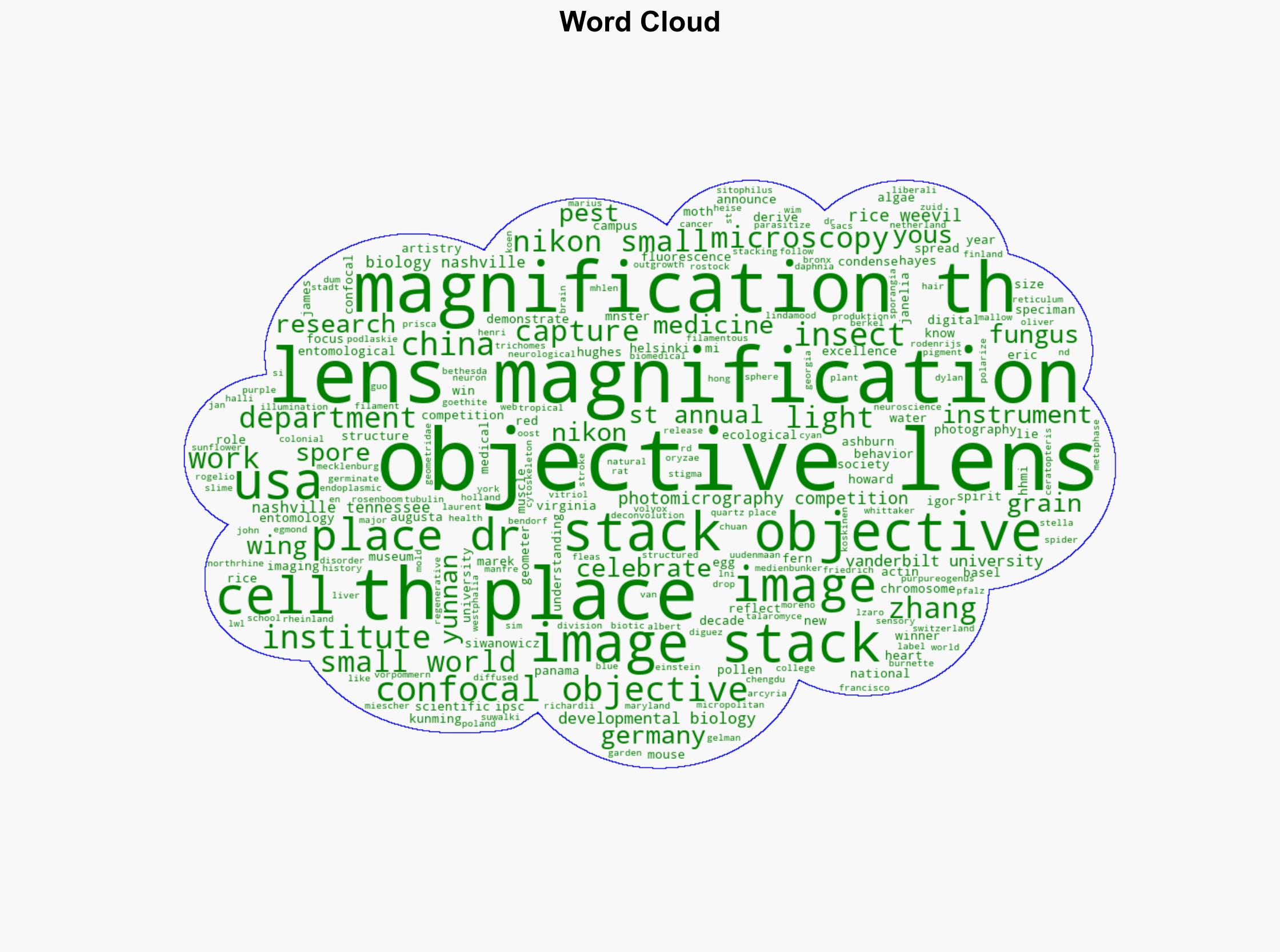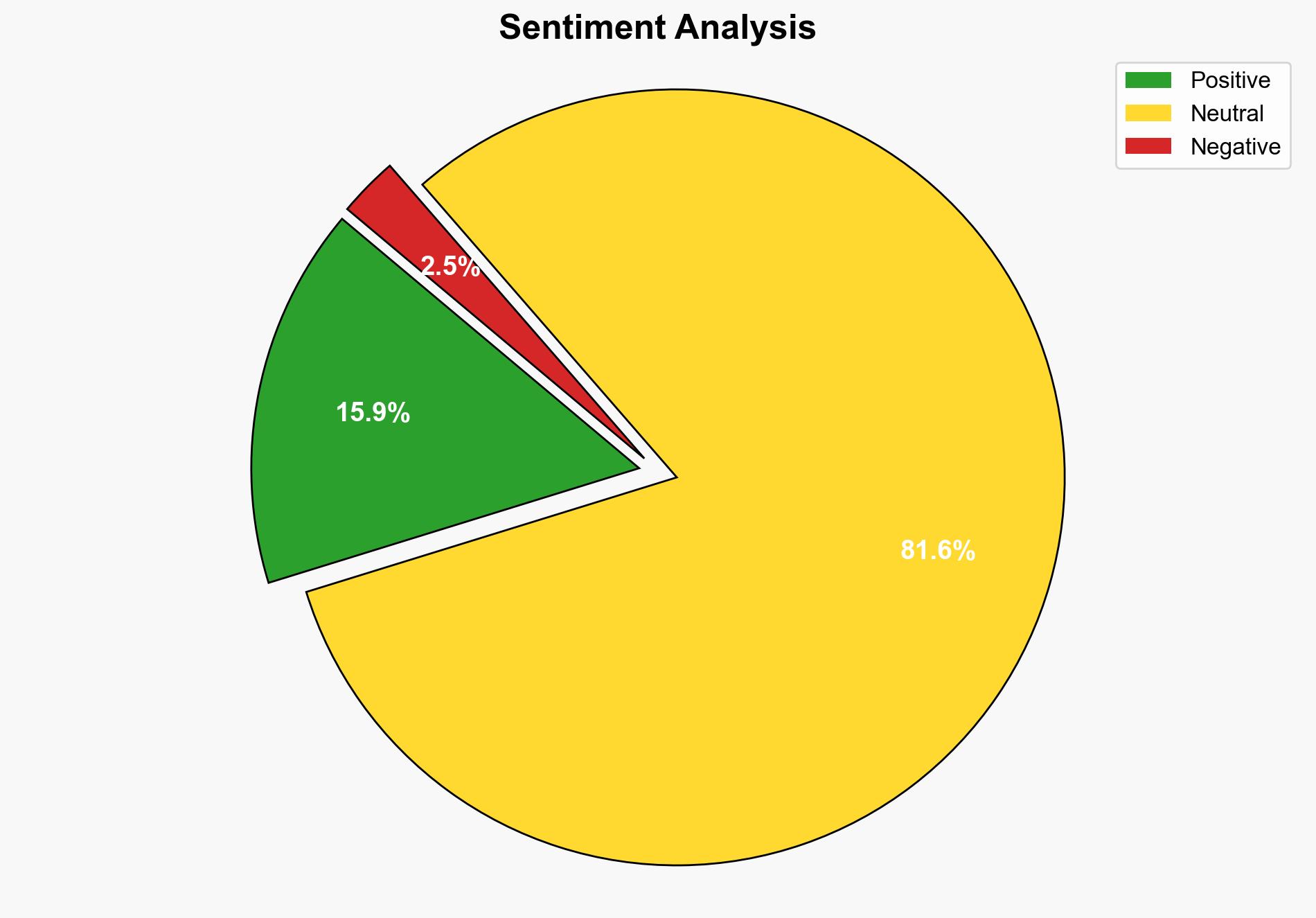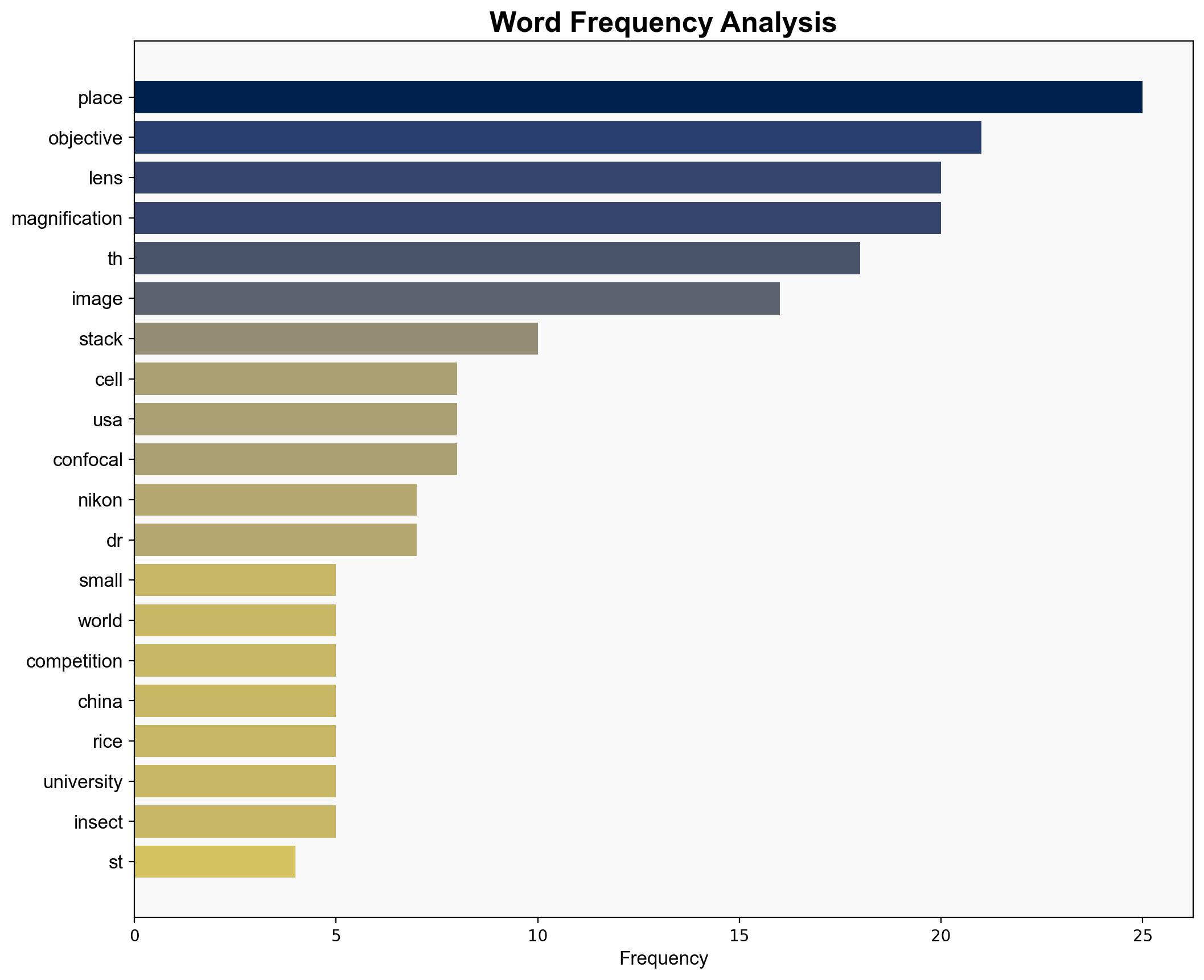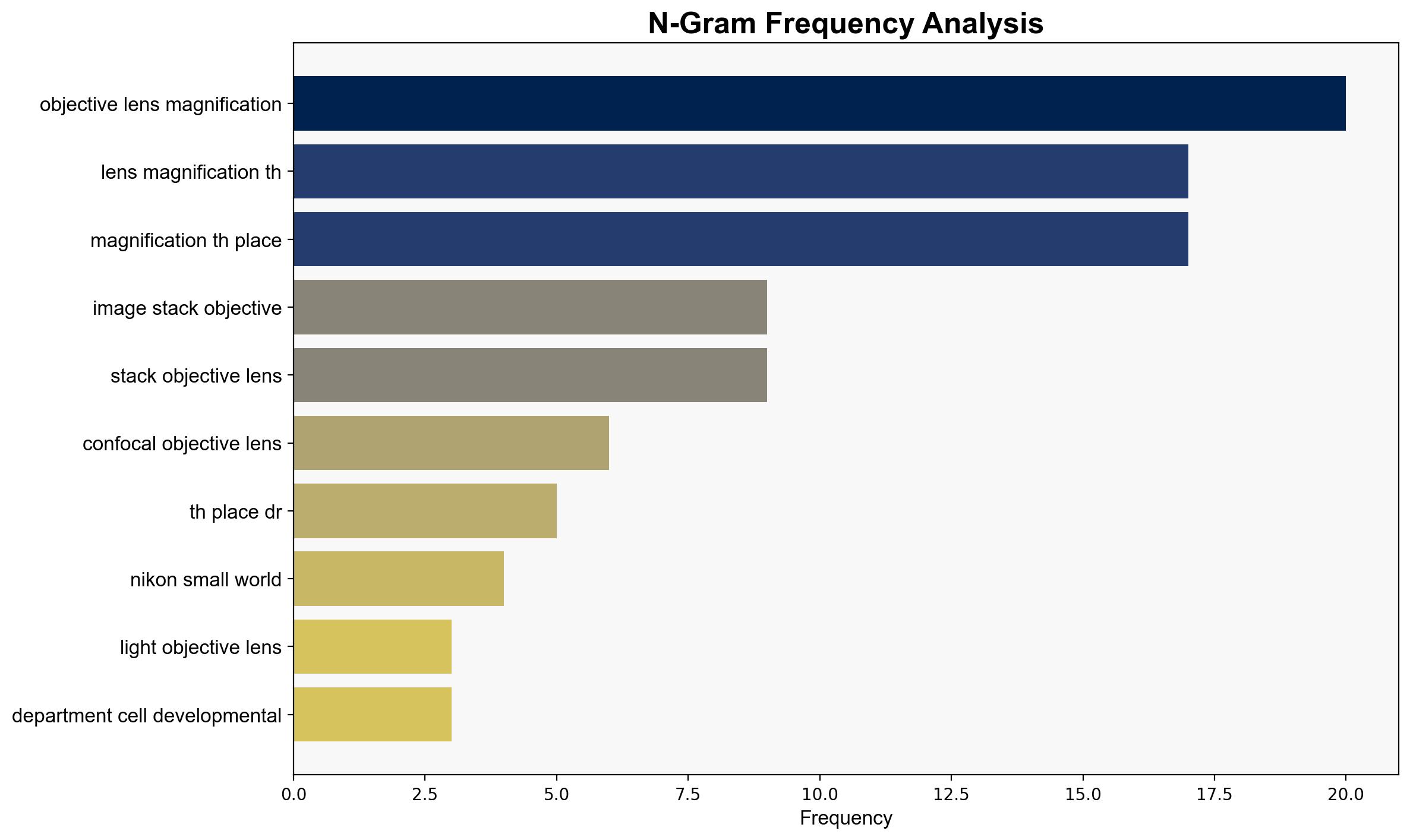2025 Nikon Small World competition winners announced – Nikonrumors.com
Published on: 2025-10-16
Intelligence Report: 2025 Nikon Small World competition winners announced – Nikonrumors.com
1. BLUF (Bottom Line Up Front)
The analysis of the 2025 Nikon Small World competition winners suggests two primary hypotheses regarding the implications of the event. The most supported hypothesis is that the competition reflects a growing trend in the international scientific community towards increased collaboration and innovation in microscopy and digital imaging. This is supported by the diverse geographic representation of winners. The confidence level in this hypothesis is moderate. Recommended action includes fostering international scientific exchanges and collaborations to leverage this trend.
2. Competing Hypotheses
– **Hypothesis 1**: The Nikon Small World competition winners indicate a trend of increasing international collaboration and innovation in microscopy and digital imaging, as evidenced by the diverse geographic representation of winners.
– **Hypothesis 2**: The competition results primarily reflect Nikon’s marketing strategy to promote its brand globally by highlighting diverse participants, rather than a genuine increase in international scientific collaboration.
Using ACH 2.0, Hypothesis 1 is better supported due to the consistent pattern of winners from various countries, suggesting a genuine global engagement in scientific innovation. Hypothesis 2 lacks substantial evidence beyond speculative marketing motives.
3. Key Assumptions and Red Flags
– **Assumptions**: It is assumed that the competition is a reliable indicator of trends in the scientific community. Another assumption is that the geographic diversity of winners directly correlates with increased international collaboration.
– **Red Flags**: The potential bias in the selection process of winners could skew the perceived trend. Additionally, the lack of detailed information on the judging criteria raises questions about the objectivity of the competition results.
4. Implications and Strategic Risks
The increasing trend of international collaboration in scientific fields could lead to accelerated innovation and technological advancements. However, there is a risk of intellectual property disputes and uneven access to cutting-edge technologies. Geopolitical tensions could also arise if certain countries perceive an imbalance in scientific progress.
5. Recommendations and Outlook
- Encourage international scientific exchanges and partnerships to harness the benefits of global collaboration.
- Monitor for potential intellectual property issues and advocate for fair access to technological advancements.
- Scenario Projections:
- Best Case: Enhanced global scientific collaboration leads to significant technological breakthroughs.
- Worst Case: Geopolitical tensions and intellectual property disputes hinder scientific progress.
- Most Likely: Continued gradual increase in international collaboration with occasional disputes.
6. Key Individuals and Entities
– Zhang Kunming
– Dr. Jan Rosenboom
– John Oliver Dum
– Dr. James Hayes
– Dr. Igor Siwanowicz
– Dr. Francisco Lzaro Diguez
– Stella Whittaker
– Wim van Egmond
– Marek Mi
– Halli Lindamood
– Eric Vitriol
– Henri Koskinen
– Manfre Heise
– Rogelio Moreno
7. Thematic Tags
scientific collaboration, international innovation, microscopy, digital imaging, intellectual property





